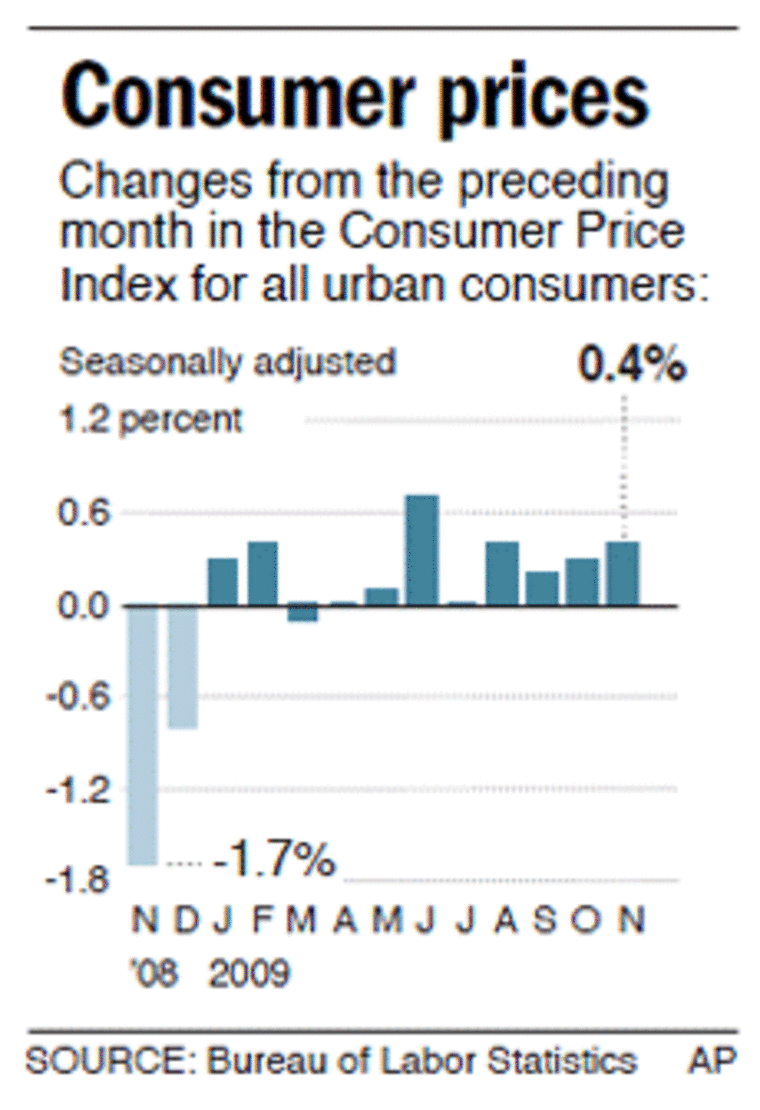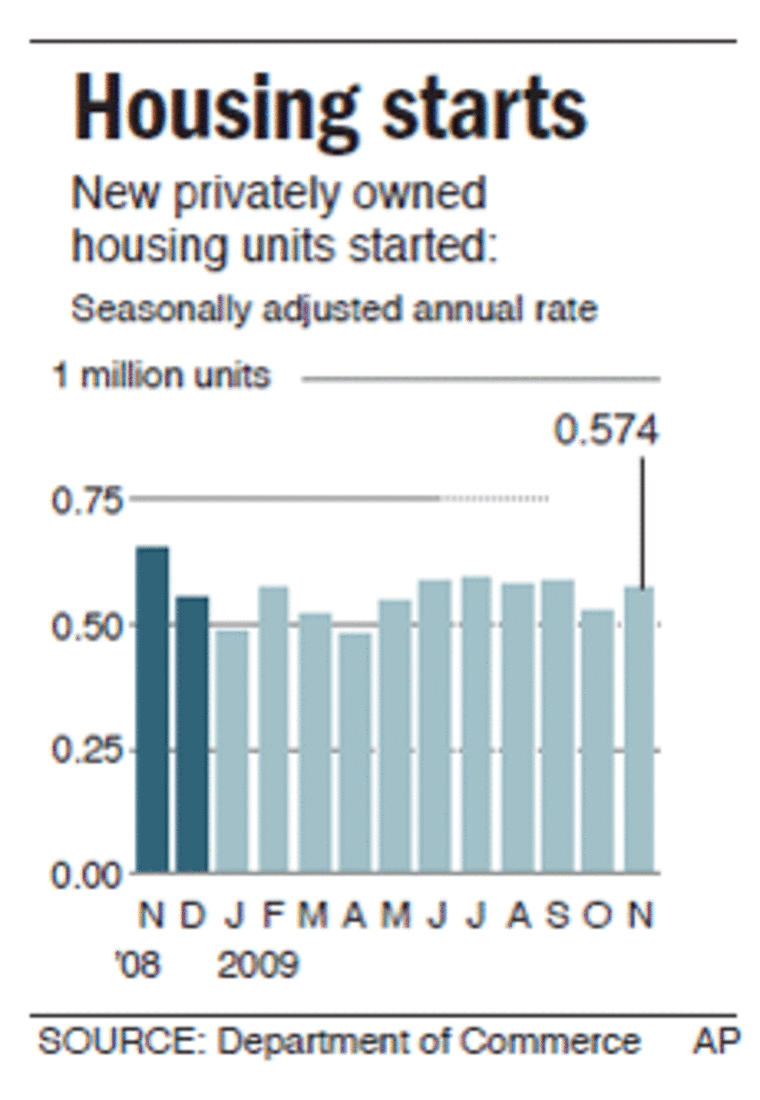The economy is weak enough to keep inflation in check but strong enough to increase the pace of home construction and raise hopes for a sustained recovery.
That was the picture sketched Wednesday by government data showing an economy growing, however slowly.
Higher energy prices sent overall consumer prices higher in November. But after stripping out volatile energy and food prices, inflation disappeared last month. That gives the Federal Reserve, ending a two-day meeting Wednesday, leeway to hold its key interest rate at a record low to aid the recovery.
At the same time, home construction rebounded in November after a setback in October. And applications for new building permits -- a gauge of future activity -- rose more than economist had predicted. A housing recovery is critical to the overall economy.
Also Wednesday, the government said its broadest measure of foreign trade posted a sharp increase in the July-September quarter, signaling higher demand for foreign goods. That, too, is seen as a sign of a strengthening economy.
The current account is the broadest measure of trade because it includes not only trade in goods and services but also investment flows among countries.

For last month, the Consumer Price Index, the most closely watched inflation barometer, rose 0.4 percent. That was up from a 0.3 percent increase in October, the Labor Department reported. But "core" inflation, which excludes energy and food, was flat, signaling that inflation isn't rising through the economy. It was the first time core inflation was unchanged after 10 straight monthly increases.
"Aside from the surge in energy prices ... there were few signs of any inflationary pressures," said Paul Ashworth, economist at Capital Economics Ltd.
In the months ahead, companies will likely find it hard to raise prices because consumers are expected to remain cautious, the job market is weak and the recovery is sluggish.
Fed Chairman Ben Bernanke says he thinks slack in the economy -- meaning idle plants and the weak job market -- will keep inflation in check. The Fed is expected Wednesday afternoon to announce that it's leaving interest rates at a record low. It may also strike an upbeat note about the economy's progress.
The government said energy prices rose 4.1 percent last month, reflecting more expensive fuel oil and gasoline. Energy prices, though, are already in retreat. Oil prices are down about 10 percent this month.
Food prices, meanwhile, edged up 0.1 percent for the second straight month. Falling prices for dairy products and nonalcoholic drinks helped blunt small increases for meat, cereals and baked goods, and fruits and vegetables.
Elsewhere, prices for clothing fell as retailers struggled to lure shoppers. Costs for recreation and for shelter dipped. But prices for airline fares, new cars, medical care and tobacco products all rose.
The uptick in inflation last month, however slight, ate into Americans' already-weak wages. Average weekly earnings, adjusted for inflation, dipped 0.7 percent from November 2008, according to a separate Labor Department report Wednesday. It was the first such drop this year.
On Tuesday, the government said its Producer Price Index, which measures the costs of goods before they reach stores, jumped 1.8 percent in November. That was more than double the gain analysts had expected. Higher-priced energy products and trucks drove the increase.

In the Commerce Department's report on housing starts, it said construction of new homes and apartments rose 8.9 percent in November to a seasonally adjusted annual rate of 574,000 units. The gain represented strength in all areas of the country, though the rise was slightly lower than economists had expected.
Applications for new building permits rose 6 percent, a stronger showing than predicted.
The government is spending an unprecedented amount to prop up the housing market. The money includes about $111 billion by year's end to shore up mortgage finance companies Fannie Mae and Freddie Mac -- plus roughly $15 billion for a tax credit for homebuyers.
In addition, the tax credit is being extended until spring at a cost of $8.5 billion. And the cost of bailing out Fannie and Freddie could ultimately soar as high as $300 billion, according to Barclays Capital.
Separately, the Fed has helped keep mortgage rates down by spending $1.25 trillion to buy mortgage-backed securities. These purchases are expected to be completed by spring.
For the third quarter, the current account deficit in goods grew to $132.1 billion, up from $115.5 billion in the second quarter. At the same time, the U.S. surplus in services -- such as airline travel, shipping and financial services -- widened to $34.8 billion from $34.2 billion.
Exports of products rose 7.2 percent, driven by automotive products, heavy capital goods and consumer products. But imports of goods rose at a faster rate, led by foreign oil and autos.
The rise in exports has been helped by a decline of about 10 percent in the value of the dollar against major currencies. A weaker dollar makes American products cheaper for foreigners to buy.